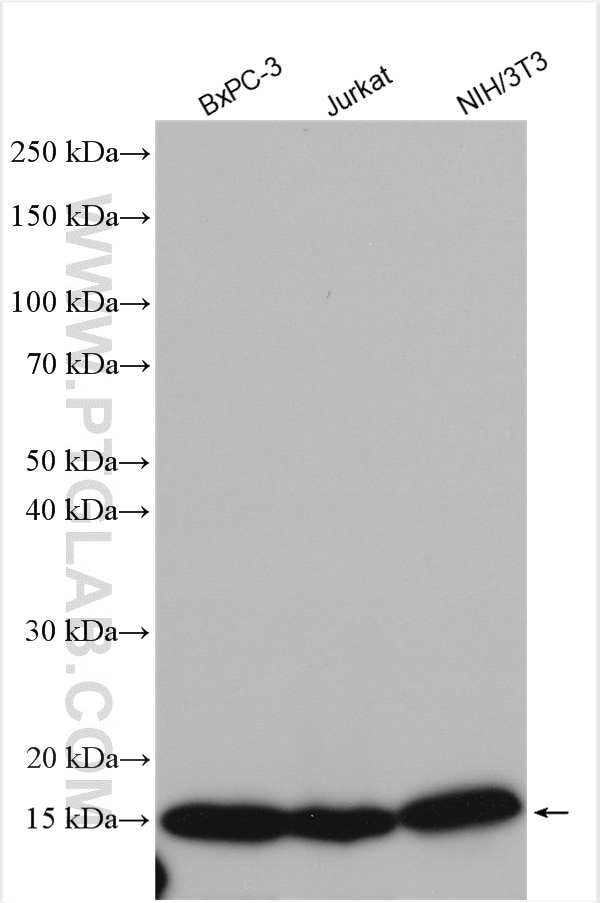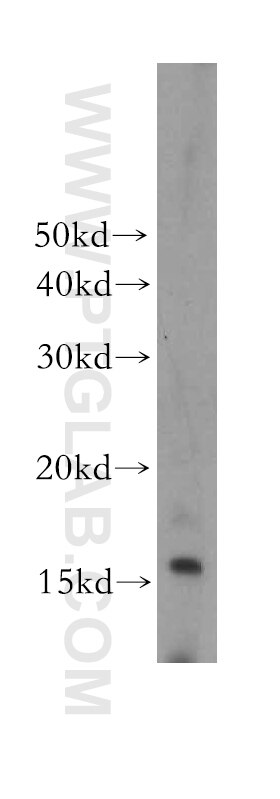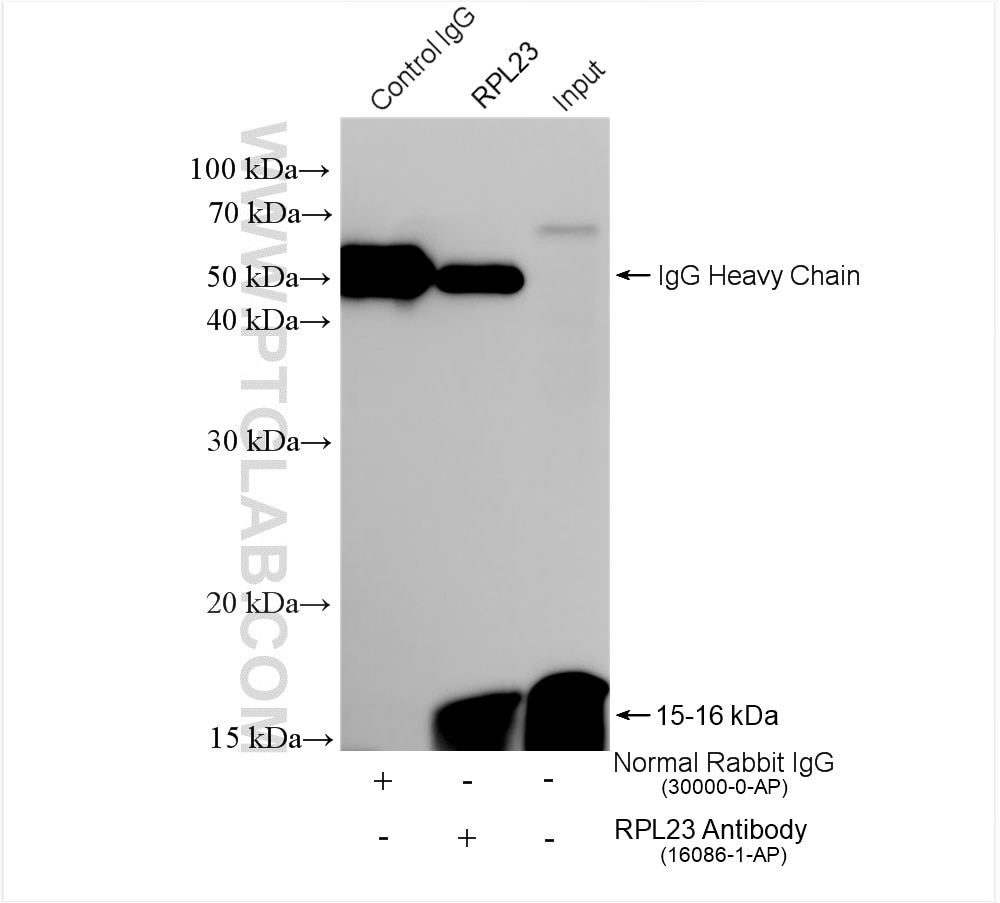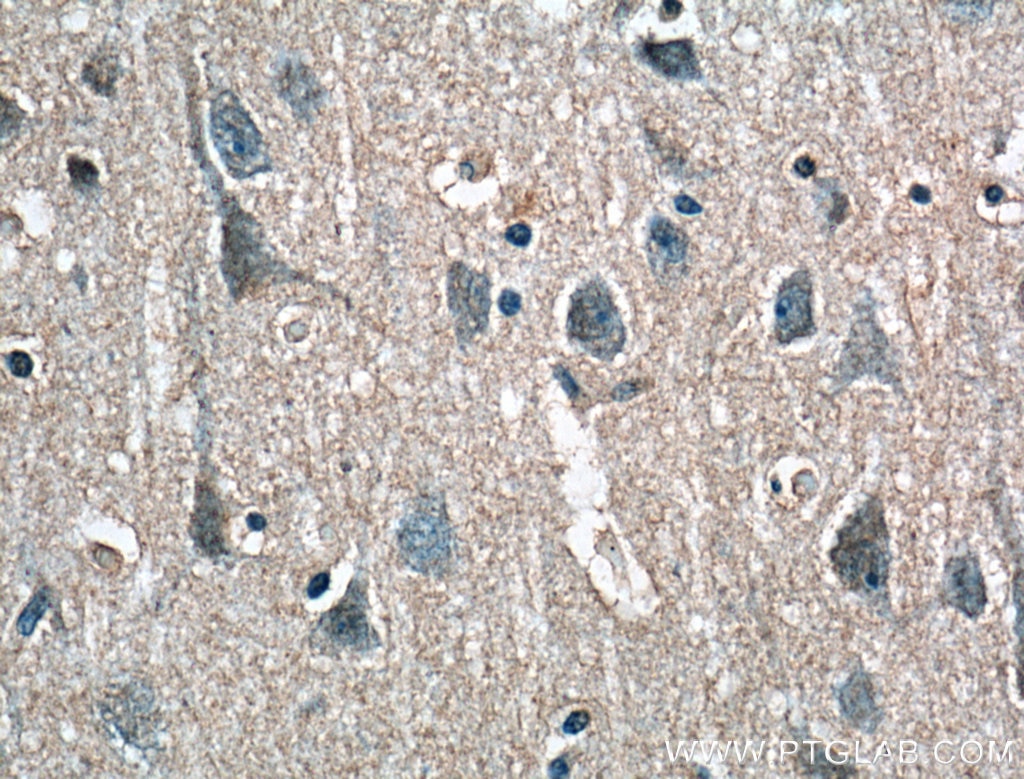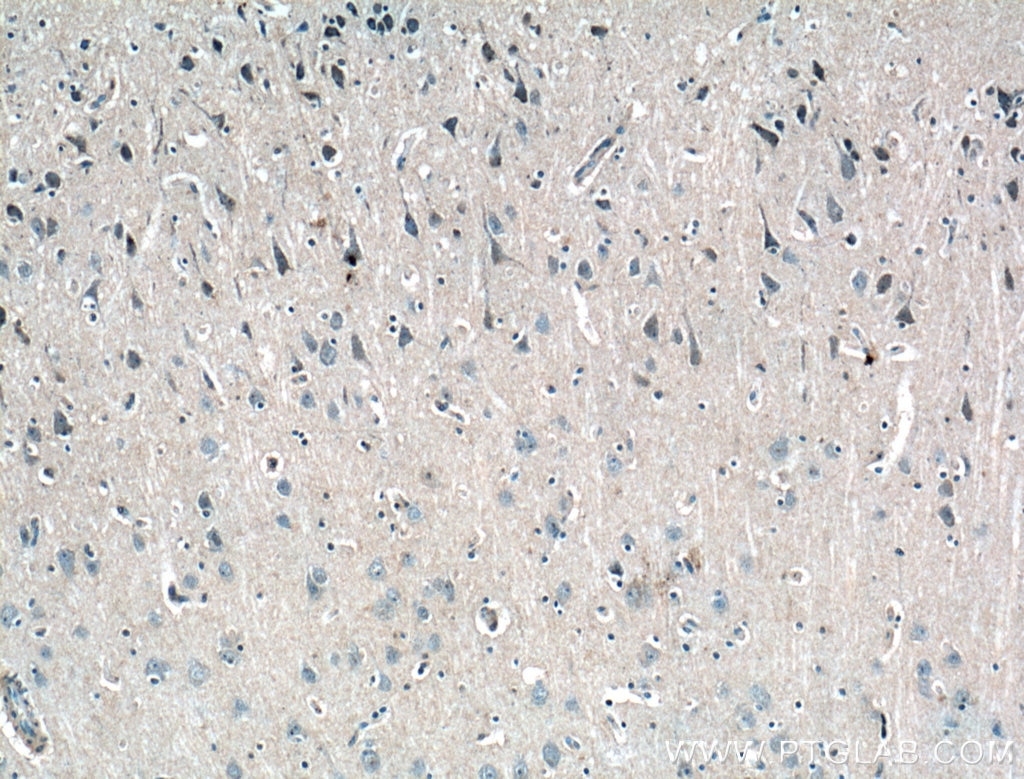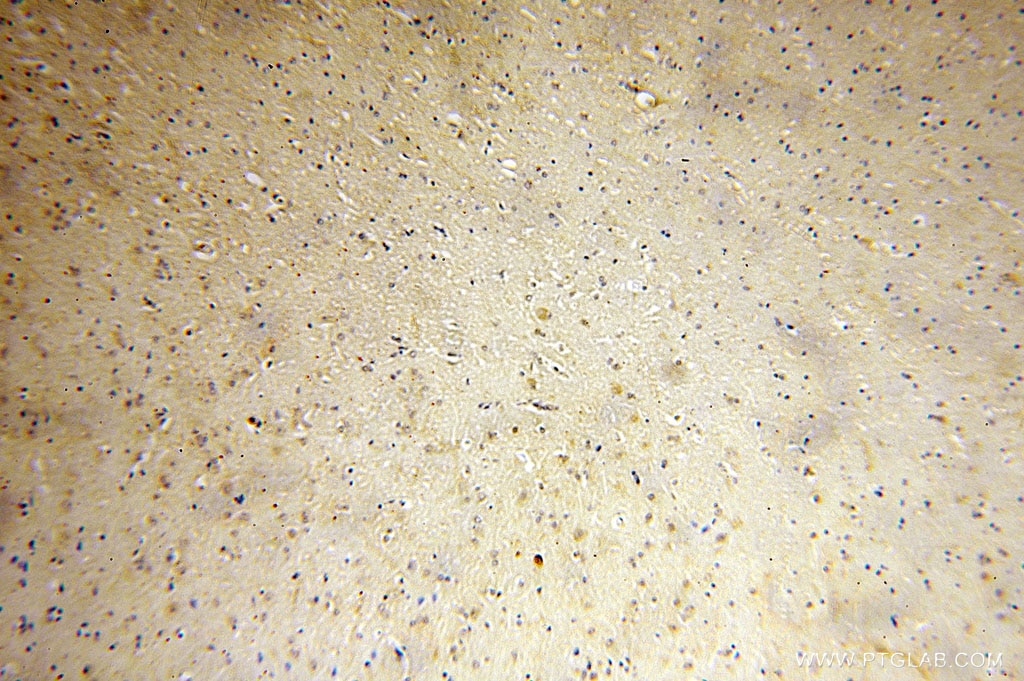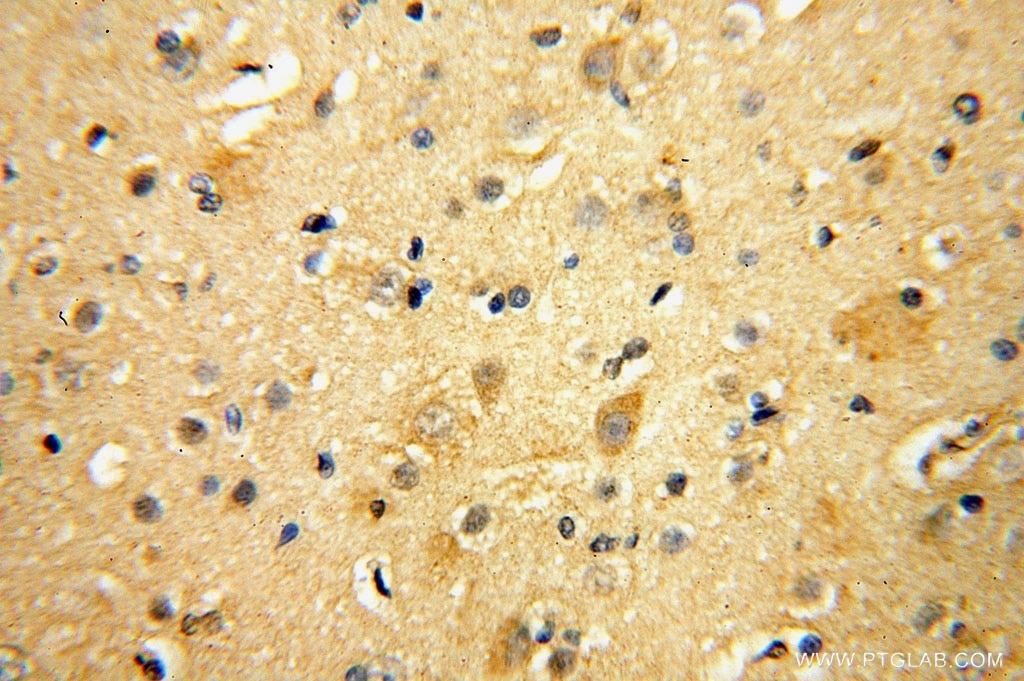- Phare
- Validé par KD/KO
Anticorps Polyclonal de lapin anti-RPL23
RPL23 Polyclonal Antibody for WB, IP, IHC, ELISA
Hôte / Isotype
Lapin / IgG
Réactivité testée
Humain, rat, souris
Applications
WB, IP, IF, RIP, IHC, ELISA
Conjugaison
Non conjugué
N° de cat : 16086-1-AP
Synonymes
Galerie de données de validation
Applications testées
| Résultats positifs en WB | cellules BxPC-3, cellules Jurkat, cellules NIH/3T3, cellules PC-3 |
| Résultats positifs en IP | tissu cérébral de souris, |
| Résultats positifs en IHC | tissu cérébral humain il est suggéré de démasquer l'antigène avec un tampon de TE buffer pH 9.0; (*) À défaut, 'le démasquage de l'antigène peut être 'effectué avec un tampon citrate pH 6,0. |
Dilution recommandée
| Application | Dilution |
|---|---|
| Western Blot (WB) | WB : 1:500-1:2000 |
| Immunoprécipitation (IP) | IP : 0.5-4.0 ug for 1.0-3.0 mg of total protein lysate |
| Immunohistochimie (IHC) | IHC : 1:50-1:500 |
| It is recommended that this reagent should be titrated in each testing system to obtain optimal results. | |
| Sample-dependent, check data in validation data gallery | |
Applications publiées
| KD/KO | See 2 publications below |
| WB | See 10 publications below |
| IHC | See 6 publications below |
| IF | See 2 publications below |
| RIP | See 1 publications below |
Informations sur le produit
16086-1-AP cible RPL23 dans les applications de WB, IP, IF, RIP, IHC, ELISA et montre une réactivité avec des échantillons Humain, rat, souris
| Réactivité | Humain, rat, souris |
| Réactivité citée | rat, Humain, souris |
| Hôte / Isotype | Lapin / IgG |
| Clonalité | Polyclonal |
| Type | Anticorps |
| Immunogène | RPL23 Protéine recombinante Ag9120 |
| Nom complet | ribosomal protein L23 |
| Masse moléculaire calculée | 140 aa, 15 kDa |
| Poids moléculaire observé | 15 kDa |
| Numéro d’acquisition GenBank | BC010114 |
| Symbole du gène | RPL23 |
| Identification du gène (NCBI) | 9349 |
| Conjugaison | Non conjugué |
| Forme | Liquide |
| Méthode de purification | Purification par affinité contre l'antigène |
| Tampon de stockage | PBS avec azoture de sodium à 0,02 % et glycérol à 50 % pH 7,3 |
| Conditions de stockage | Stocker à -20°C. Stable pendant un an après l'expédition. L'aliquotage n'est pas nécessaire pour le stockage à -20oC Les 20ul contiennent 0,1% de BSA. |
Informations générales
Ribosomes, the organelles that catalyze protein synthesis, consist of a small 40S subunit and a large 60S subunit. Together these subunits are composed of 4 RNA species and approximately 80 structurally distinct proteins [PMID:9582194]. RPL23 is a component of the 60 S large ribosomal subunit that interacts functionally with murine double minute 2 protein (MDM2 or HDM2 in humans). Upon binding to MDM2, RPL23 inhibits MDM2-mediated p53 degradation, thus activating p53 and inducing cellular apoptosis [PMID:15314174]. Intriguingly, RPL23 has also been suggested to be a negative regulator of apoptosis by suppressing the Miz1-induced transcription of the cell cycle inhibitors p15INK4B and p21CIP1[PMID:19160485].
Protocole
| Product Specific Protocols | |
|---|---|
| WB protocol for RPL23 antibody 16086-1-AP | Download protocol |
| IHC protocol for RPL23 antibody 16086-1-AP | Download protocol |
| Standard Protocols | |
|---|---|
| Click here to view our Standard Protocols |
Publications
| Species | Application | Title |
|---|---|---|
Nat Cell Biol LIN28 phosphorylation by MAPK/ERK couples signalling to the post-transcriptional control of pluripotency. | ||
EMBO J Decreased synthesis of ribosomal proteins in tauopathy revealed by non-canonical amino acid labelling. | ||
Sci Rep Ribosomal protein L23 negatively regulates cellular apoptosis via the RPL23/Miz-1/c-Myc circuit in higher-risk myelodysplastic syndrome.
| ||
Front Oncol Ribosomal Protein L23 Drives the Metastasis of Hepatocellular Carcinoma via Upregulating MMP9.
| ||
J Alzheimers Dis Tobacco Smoke Exposure Impairs Brain Insulin/IGF Signaling: Potential Co-Factor Role in Neurodegeneration |
